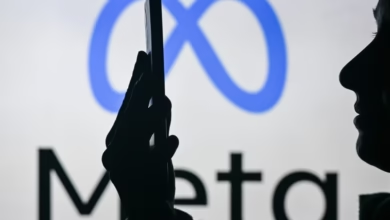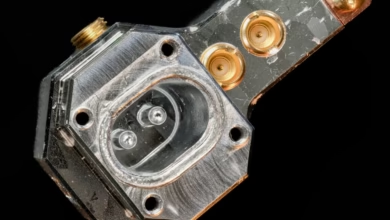AI Expert: Why Quantum AI Is the Future of Tech

▼ Summary
– Quantum AI combines quantum computing and AI to solve problems beyond classical systems, leveraging qubits’ superposition for parallel processing.
– The quantum tech market is projected to grow from $35 billion to $1 trillion by 2030, with over 60% of business leaders actively investing in Quantum AI.
– Key barriers to Quantum AI adoption include high costs (38%), lack of understanding (35%), and uncertainty about real-world applications (31%).
– Quantum AI uses hybrid quantum-classical systems to enhance machine learning, with applications in healthcare, finance, logistics, and cybersecurity.
– Challenges include qubit fragility, the need for extreme cooling, algorithm development, and ethical governance to prevent misuse.
Quantum artificial intelligence represents a groundbreaking fusion of quantum physics and machine learning, unlocking computational capabilities that could redefine entire industries. This emerging field combines the parallel processing power of quantum systems with AI’s pattern recognition strengths, creating solutions for problems that currently overwhelm classical computers.
The market potential is staggering. Current valuations place quantum technology around $35 billion, but projections suggest it could skyrocket to $1 trillion by 2030. A recent survey of 500 business leaders revealed that over 60% are actively investing or exploring Quantum AI, signaling strong confidence in its disruptive potential. However, adoption faces hurdles, including high costs (38%), knowledge gaps (35%), and uncertainty about real-world applications (31%).
How Quantum AI Works
At its core, Quantum AI leverages qubits, which exploit quantum superposition to process multiple states simultaneously. Unlike classical bits restricted to 0 or 1, qubits enable exponential computational speedups. When paired with AI’s data-crunching abilities, the synergy allows for breakthroughs in optimization, simulation, and cryptography.
Machine learning models benefit from quantum-enhanced algorithms, where data is encoded into quantum states. Techniques like parameterized rotations and entanglement help uncover hidden patterns faster than classical systems. Yet, most implementations today rely on a hybrid approach, blending quantum and classical computing to compensate for hardware limitations.
Industries Poised for Transformation
- Healthcare: Accelerating drug discovery by simulating molecular interactions at unprecedented speeds.
Obstacles on the Horizon
Despite its promise, Quantum AI faces steep challenges. Qubits are notoriously fragile, requiring near-absolute-zero temperatures and isolation from environmental noise. Developing stable hardware remains a monumental engineering feat.
Software presents another hurdle. Bridging quantum physics and machine learning demands interdisciplinary expertise, and new programming frameworks are still in their infancy. Ethical concerns also loom large, without proper governance, the technology’s immense power could be misused or perpetuate biases.
The Path Forward
The next decade will be pivotal. As quantum processors grow more reliable and AI models adapt to quantum architectures, we’ll see the first wave of practical applications. Success hinges on collaboration, between researchers, corporations, and policymakers, to ensure responsible development.
We stand at the threshold of a computational revolution. Quantum AI isn’t just an incremental improvement; it’s a paradigm shift that could solve problems once deemed impossible. The journey won’t be easy, but the rewards could reshape our technological landscape forever.
(Source: TechRadar)






